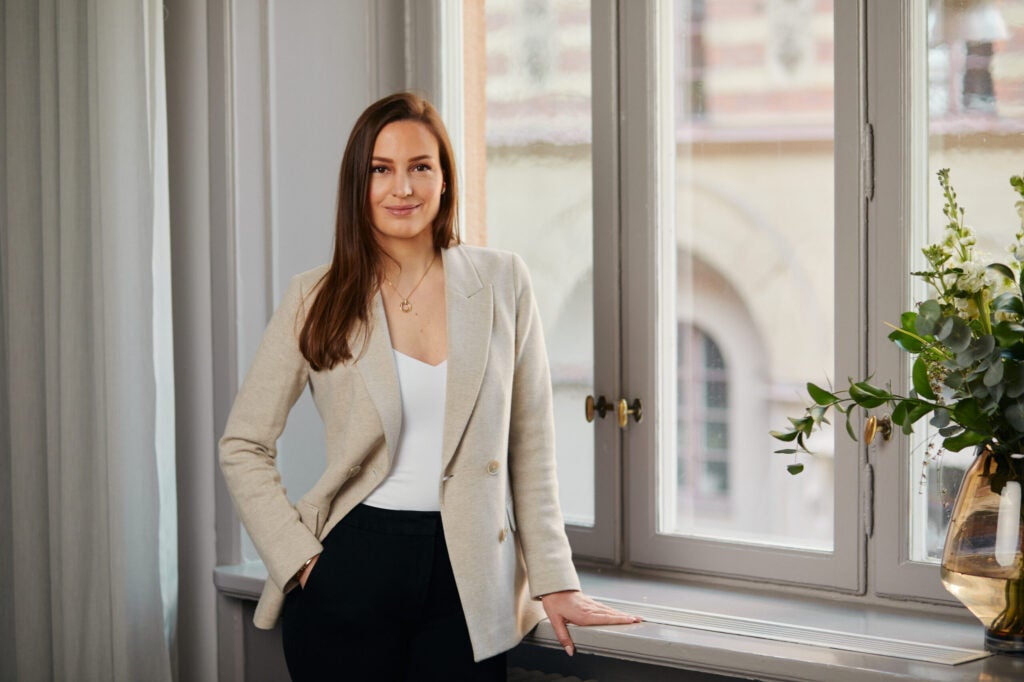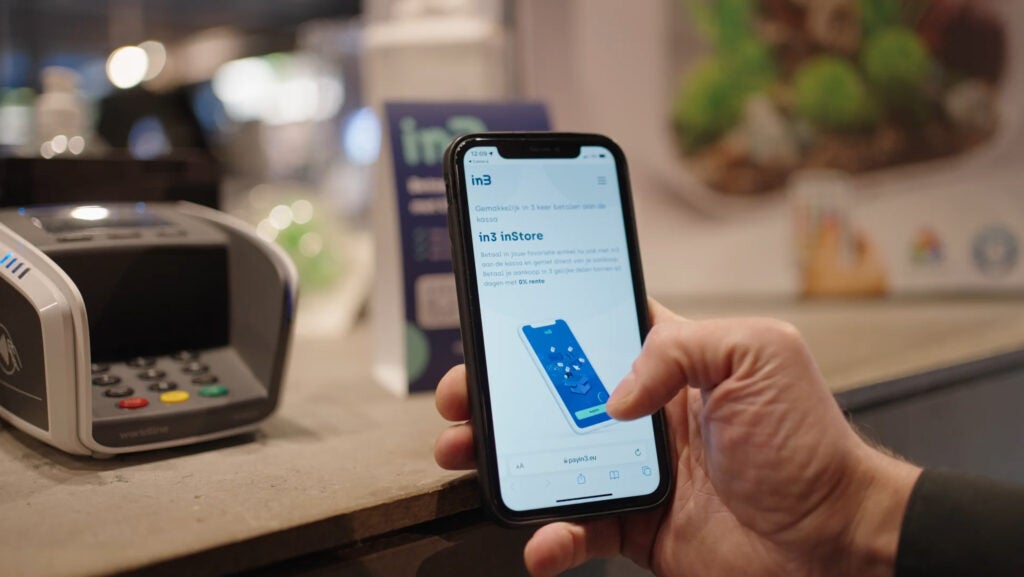In a radical attempt to differentiate itself in the
competitive Australian market, Commonwealth Bank has launched a
controversial marketing campaign under the banner Determined to be
Different. While it is early days, few bank marketing efforts have
generated as much publicity, writes Douglas Blakey.
Commonwealth Bank of Australia (CBA), the country’s largest retail
bank, has run one of the highest-profile bank ad campaigns in
recent history – and a campaign that has generated a huge amount of
debate in its native Australia. The marketing initiative comes,
appropriately, with a new tag line, ‘Determined to be
Different’.
CBA posted a record A$2.38 billion ($2.23 billion) net profit for
the six months to 31 December 2007, up 4 percent from A$2.29
billion for the same period last year, having increased provisions
for bad debts by A$138 million during the half; the results
received a lukewarm response from analysts but did not generate the
kind of publicity endured by a number of CBA’s peers in the US or
Europe.
By contrast, the bank’s new advertising campaign, which kicked off
on Australia Day (26 January), the official national day of
Australia, created quite a stir and a level of publicity rarely
associated with a bank’s marketing activity.
High-profile Australian ad man and entrepreneur John Singleton,
founder of the country’s largest communications services group,
STW, went on the warpath, calling for CBA’s ads to be scrapped and
suggested the person responsible for the campaign should be sacked.
“Obscene and a waste of money,” was Singleton’s assessment of the
first ads, which have been devised as an entertainment device to
deliver the bank’s marketing message.
The sit-com style TV ads that so enraged Singleton show an
incompetent, fictional US advertising agency struggling to
understand Australian culture; the ad spots also leverage the
bank’s long-running sponsorship of cricket with US ad agency
executives asking members of the Australian cricket team if that
game is really a sport.
How well do you really know your competitors?
Access the most comprehensive Company Profiles on the market, powered by GlobalData. Save hours of research. Gain competitive edge.

Thank you!
Your download email will arrive shortly
Not ready to buy yet? Download a free sample
We are confident about the unique quality of our Company Profiles. However, we want you to make the most beneficial decision for your business, so we offer a free sample that you can download by submitting the below form
By GlobalDataWhile the use of humour to promote a bank has been tried many times
before, employing clichéd stereotypes such as Crocodile Dundee
look-a-likes, koala bears and boomerangs and generally trying to
make Americans look stupid is not the type of creative common in
bank advertising.
Less than flattering quotes
Singleton was not alone in condemning CBA and within days of the
first ad appearing, internet blogs and Australian newspapers were
full of less than flattering quotes from Australian advertising
commentators, a number of whom were enraged that leading US-based
ad agency Goodby Silverstein and Partners in San Francisco was
handling the CBA media account.
CBA CEO Ralph Norris acknowledged that a degree of controversy
concerning the campaign and choice of agency was inevitable. “We
knew that the Australian advertising industry was ready to turn
feral based on the fact that we’ve gone offshore and used a
US-based agency, and what have they done? They’ve created the
greatest awareness around a campaign that has happened in Australia
for a long, long time.”
In an interview with RBI, the bank’s chief marketing
officer, Mark Buckman, said: “Research shows we have achieved the
kind of brand recognition and recall in just two weeks that takes
some organisations years to build. We are extremely pleased with
both customer and staff response to the campaign.”
According to Buckman, part of the thinking behind the advertising
was a belief that “the worst advertisements are those that are made
and not remembered. This campaign certainly does not suffer from
this.”
He said: “Of course it’s going to be controversial, of course it’s
going to be radical, but banks or organisations that have
advertising campaigns based around moving wallpaper don’t get a lot
of acknowledgment, don’t get a lot of recognition, so I have to say
I’m very pleased with where we’re at, and I’ll just say watch this
space, because you’re going to see a lot more interesting
advertising come on the back of this.”
There is, however, a serious marketing strategy underpinning the
campaign beyond a series of amusing ads and a new tag line.
“Determined to be Different is about our marketing catching up with
the many improvements that have been delivered in the bank’s
transformation and about getting our customers and prospects to
think differently about Commonwealth Bank,” said Buckman. “It is
much more than a tag line. It is a promise to its customers – a
standard by which it will be judged [and] a commitment to
innovation in products and in service. It’s about who we are, not
just who we say we are.”
A strong push to ramp up the bank’s customer service efforts has
been a consistent theme of Norris’s time as CEO of the bank. He
made his reputation for building customer- oriented organisations
with his previous employers – he was credited with Air New
Zealand’s turnaround and New Zealand bank ASB’s top rating for
customer service.

Doing something right
Norris and his team must be doing something right. Complaint
numbers have dropped significantly – down by 40 percent from 2005
to 2006 and another 20 percent during 2007. Polling organisation
Roy Morgan reported CBA’s retail customer satisfaction levels
improved from 66.5 percent to 70.5 percent during 2007, while CBA’s
2008 interim report claimed that CBA customer compliments have
increased by 35 percent since December 2006.
“Over 70 percent of our retail banking customers now give us
satisfaction ratings of nine out of ten. In our new-style branches,
this number rises to 90 percent,” he said.
Buckman argues that a number of factors have contributed to the
bank’s improved customer satisfaction ratings, in particular the
bank’s investment in its branch network and staff. “Over 7,000
staff have trained as sales and service masters, delivering a
higher standard of service to customers across our retail network.
CBA also introduced a new branch operating model from July and we
have opened eight new state-of-the-art retail branches in strategic
locations with a further 60 to be opened in the balance of this
financial year.”
Extended opening hours on Saturdays and Sundays has also played
part of CBA’s successful branch policy, reflected in it being
shortlisted for RBI’s Award for Best Branch Strategy
(see The retail banking hotlist).
CBA’s new series of ads will also have a product theme, said
Buckman. “We will highlight the many ways that our offering is
different, better or unique in comparison to our competitors. We
started with home loans and kids banking and are very confident the
campaign will resonate with our customers and our prospects.”
Wide of the mark
While Buckman does not disclose the ad spend on the new campaign,
he pointed out that Australian media reports of a A$50 million ad
budget were wide of the mark.
“It is less than 20 percent of that figure,” he said. “We are
investing no more or less in this campaign than would normally be
the case but we’re expecting significantly improved effectiveness
from the campaign, and early signs are that this will certainly be
the case.”
He said that 12 days after the first ads ran, 64 percent of people
were able to recall CBA’s ad unprompted; of those, 96 percent were
able to name Commonwealth Bank as the brand behind it.
Promotion of that brand is also a priority for Buckman. “The job we
have to do is to make the Commonwealth Bank brand liked a whole lot
more. People aren’t sitting at home waiting for the next financial
services ad to come on television. We’re also breaking through two
boundaries here – getting people to think differently about CBA and
getting people to think differently about advertising.
“This campaign treats consumers with respect and intelligence and
uses the sitcom genre to connect. The days of sing-us-a-song, tell
them a joke, sell them a product advertising are over.”
As for the very heated and public criticism aimed at CBA by John
Singleton, Buckman said: “We showed our appreciation – and the
associated widespread free publicity – by sending him a thank-you
note and a case of his own company’s beer.”

Record profits but results disappoint
CBA registered a 4 percent increase in net profit after tax for the
half year ended 31 December 2007 to A$2.39 billion ($2.23
billion).
CBA’s Retail Banking Services unit performed well, said the group,
delivering a profit of A$949 million – up 8 percent. There was
strong volume growth in home loans (up 14 percent) and deposit
revenue increased 6 percent on the prior comparative period, driven
by balance growth of 12 percent.
The bank said it also benefitted particularly from an “outstanding
performance” in its wealth management business, up 27 percent
year-on-year. Insurance income increased by a more modest 3 percent
compared with a year ago. Commissions increased by 6 percent,
principally driven by increases in home lending package fees and
strong brokerage commissions.
CEO Ralph Norris said: “The group has continued investing in its
five strategic priorities through these challenging times and I am
pleased with the progress. The customer service improvements are
continuing and are delivering pleasing asset growth and market
share gains.”








